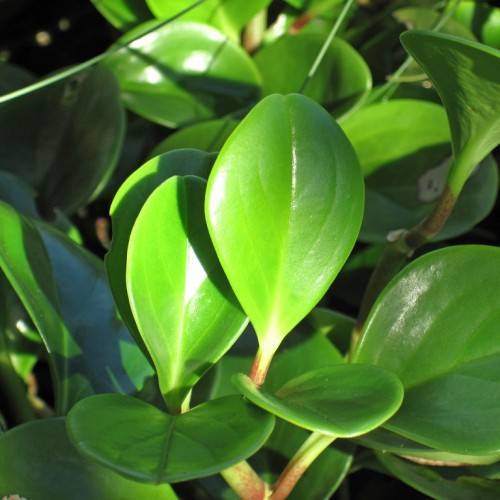
baby rubber plant
Peperomia obtusifolia
Also Known As - blunt-leaved peperomiaCycle:
Herbaceous Perennial
Watering:
Average
Hardiness Zone:
10 - 12
Flowers:
Flowers
Sun:
part shade,part sun/part shade
Soil:
Well-drained
Fruits:
Fruits Ready In
Leaf:
Yes
Growth Rate:
Low
Maintenance:
Low
Drought Tolerant:
Yes
Indoors:
Yes
Care Level:
Medium
watering
The baby rubber plant (Peperomia obtusifolia) should be watered generously but not too often. During the spring and summer months, it will likely need to be watered about once a week, making sure that the soil is evenly moist. In the fall and winter, cut back on watering to about once every 2 weeks. Make sure you observe the soil conditions before watering to prevent overwatering, as this can cause root rot or other damage.
sunlight
The baby rubber plant (Peperomia obtusifolia) needs indirect bright light to survive and thrive. Providing the baby rubber plant with enough light is essential for healthy growth. The light intensity and duration vary seasonally; a minimum of 6 hours of light is recommended in the winter months, while 8-12 hours is best for the spring and summer months. Direct sunlight should be minimized, as it can cause the leaves of the baby rubber plant to turn yellow.
pruning
In general, the plant will gain its desired shape and size without needing to be pruned. But if you would like to encourage a fuller shape, or if the plant is showing signs of too much growth or crowding, you can prune lightly as needed throughout the year. If you plan to prune your Peperomia obtusifolia, the best time is in late winter or early spring before new growth begins. At this time, any dead or overgrown leaves and stems can be cut away to improve the overall look of the plant. Additionally, you can pinch off stems to encourage the plant to grow in a fuller, denser shape.
